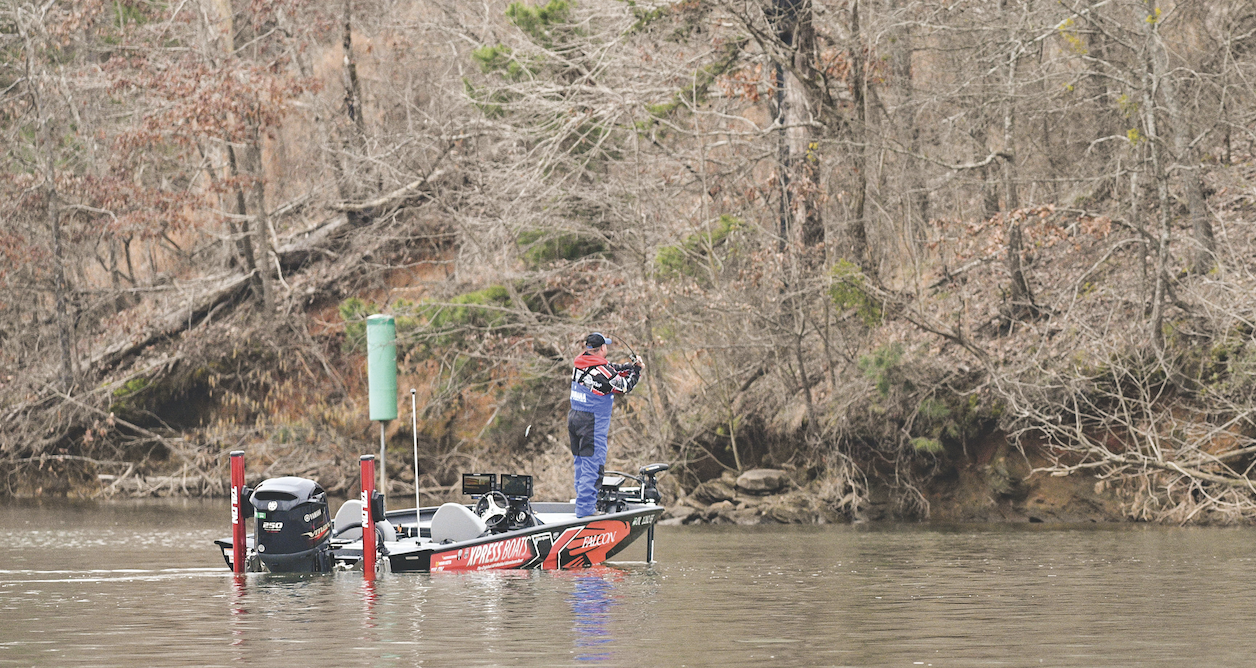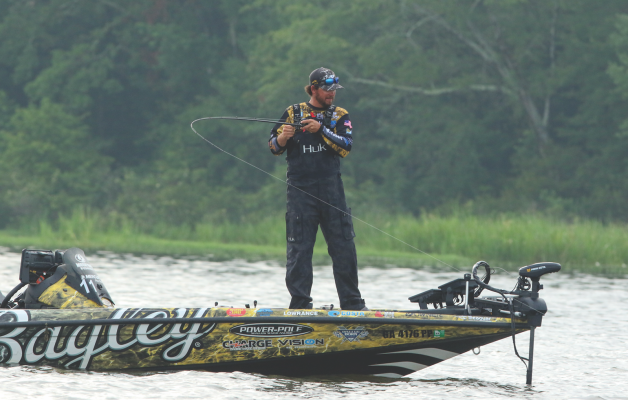
Ever have one of those days where you’re just not feelin’ in it? Pre-coffee fog, first day back from vacation, maybe a late night slow rolled into “I’m too old for this…” You know the feeling: chin down, eyelids drooping, deadpan stare intended to discourage conversation and a general lethargy that says, “I see doughnuts in the break room, but unless one drops off the table and rolls into my office, I’ll pass.”a
Well, we’ve just described a largemouth bass during post-frontal conditions. Sub in crawfish, shad or bluegill for doughnuts and that’s about the size of it.
Why the gloom? Opinions vary, but the main motivators are temperature declines and superbright sunlight. Blame the latter on extreme atmospheric clarity and high pressure found on a front’s backside. Built with no eyelids, bass flee those glaring “bluebird” skies by tucking close to cover. As Bassmaster Elite Series angler Dale Hightower notes, that could mean hugging a big rock or getting up close and personal with a laydown in a deeper reservoir, while in a weedy Southern lake, burying as deep into or under vegetation as possible is the fish’s Tylenol. “Typically, the bite gets tougher because the strike zone shrinks,” Hightower said. “They’re not going to chase much, so topwaters and your faster-moving baits typically aren’t going to be as effective.” Comparatively, Elite Series pro Randy Pierson of Oakdale, Calif., says most Golden State fisheries see far fewer cold-front impacts than what he encountered during his first year of fishing eastern U.S. waters. With the exception of the shallower Clear Lake and California Delta, largemouth on Pacific Time generally handle the changes more gracefully than their East Coast counterparts.
“I think it’s the deeper water California has to fish,” Pierson said. “We can go out in cold-front conditions and not really worry about it; you just tend to slow down a little bit. But back east, it seemed that the fish disappeared when the cold fronts hit.”
Notably, Florida-strain bass have been stocked in many of California’s Mother Lode lakes (referencing the historic Sierra Nevada discovery of the 1850s gold rush). But Pierson finds that even these genetically delicate creatures don’t seem to wig out nearly as bad where greater depths afford more stability.
Arizona stick Cliff Pirch agrees. “A Florida-strain bass in a Western reservoir is a more catchable fish than a Florida bass in the St. Johns River or Lake Okeechobee. These fish live so shallow, the water temperature fluctuates much more dramatically than a deep reservoir would. Really shallow water might drop 14 degrees overnight, whereas a reservoir might drop 4 to 6 degrees.”
Not to worry, though; a weather-irritated largemouth — Northern or Florida — is still a creature largely guided by its stomach. That means there are ways of coping with the pouty face, dealing with the bad hair day and convincing a fish to take a break from the self-pity trip long enough to open its mouth.





